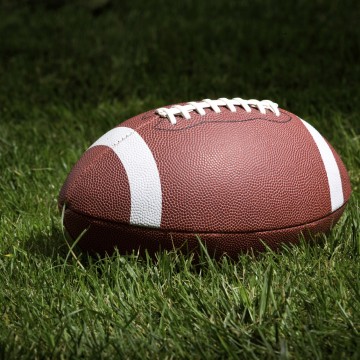College Admissions: More Athletic Recruiting Tips
Wednesday, June 17, 2015

The first, of course, is how "in demand" you are as an athlete –the faster your swim or track times, the more years on an ODP (Olympic Development Program), the farther you throw—the more you will be pursued by coaches.
Just how much the phone will be ringing will depend on how aggressively you have promoted yourself and how strongly you have established relationships with coaches. Writing, emailing and calling coaches is the best way to get on a coach’s radar. Having done your homework prior to this is very important as it shows a coach there are legitimate reasons you want to attend that school. This is the biggest and best way for an athlete to get ahead in the recruiting game and it's never too early to start. Many schools have small recruiting budgets and it's not always easy for coaches to be aware of prospective athletes. Proactive contact in your freshman through junior years is the key to getting on a coach's radar. Registering for the NCAA Eligibility Center during sophomore year is also helpful.
I was initially surprised to find that most coaches feel short video clips are helpful in the recruiting process. Sure it’s clear that these clips are useful for the more subjective sports (soccer, basketball, etc) as these sports are harder to "measure" and the videos are one way to show technical and creative moves. I was very interested to find that “timed sports” coaches, such as swimming and track & field, also find video clips very useful. For example, if a coach sees on your video that you currently only take three dolphin kicks off a wall, she may believe you have great room for improvement if she can train you to take six dolphins off the wall instead or make other technical adjustments to improve your stroke.
I am constantly amazed at how late in the recruiting process athletes get started. If you are serious about pursuing your sport in college, I strongly suggest you start your recruiting campaign in freshman and sophomore years. Here’s what you can do:
- Research colleges based on academic, social and financial fit—for example, do you know your estimated EFC?
- Research the athletic fit. Can you realistically compete at a DI level or should you be looking at DII or DIII? Do you understand the difference in level of competition as well as level of commitment?
- Research what collegiate conference they could potentially score in. Coaches in timed sports in particular are largely looking for athletes that can score for them in their conference, as well as go on to compete at the NCAA national level.
As you can see, there’s lots of research to be done to maximize your chances for a great fit college, as well as maximize chances for merit and athletic aid.
Coaches are looking for top students who can earn merit aid to supplement the athletic aid they have to carefully manage due to their limited budgets. Beginning freshman year, you need to carefully choose classes to make sure they are NCAA compliant, as well as take rigorous courses while still maintaining a solid GPA. Careful course planning, as well as strategically taking standardized tests, and applying to colleges where your test scores are in the top 25% of the pool can maximize your financial aid packages.
I am often asked if I recommend student/athletes sign up for a recruiting service such as BeRecruited, NCSA, or CaptainU. These services have a role in recruiting and some are better suited for certain sports than others. They cannot hurt and if you want to spend the time and effort to create a profile and continue to keep it updated, then it is fine to utilize them. I have learned by talking to many, many coaches, however, that most of them prefer direct contact from the student/athlete vs. working with a service as an intermediary. They often do not have the time to research such databases and most prefer to recruit those athletes that contact them directly. So again, the best way to get on a coach’s radar and make them aware of you is direct contact!
Bottom Line: Start early, do your research, focus on your grades and the rigor of courses you take, compete at the highest level possible in your sport, and then assertively promote yourself. These actions will maximize your chances to compete and secure athletic funding at a right-fit college.
__________________________________
Kathy Smith Connor is the owner of Connor College Consulting. She swam for Stanford on a full athletic scholarship, competed on several US National swim teams and was an alternate to the 1980 United States Olympic Team. She helps student athletes find their best fit college academically, socially, financially and athletically. Contact her at [email protected].
Jodi Walder-Biesanz is the founder of Portland, Oregon-based College Admission Coach LLC which helps students identify and gain admission to right-fit schools where they will thrive academically and personally. Contact her at [email protected].
Related Slideshow: The Top 10 Most Popular Cities for College Grads
Portland is the 5th most popular city for college grads, according to Business Insider. Here are the 10 U.S. cities where the number of college-educated residents ages 25 - 34 grew the most between 2000 and 2012, ranked by percentage change.
Related Articles
- College Admissions: Key Steps to the Athletic Recruiting Process
- College Admissions: School Specific Research
- College Admissions: Six College-Related Tasks Juniors Should Complete Now
- College Admissions: Portland Spring College Fair
- College Admissions: Pacific Northwest Scholarships
- College Admissions: Writing During the Summer
- College Admissions: Typical College Interview Questions
- College Admissions: Thanks and Stay in Touch
- College Admissions: The Similarity Between Online Dating Profiles and ‘Why This College?’ Essays
- College Admissions: Tips for Fantastic College Visits
























Follow us on Pinterest Google + Facebook Twitter See It Read It